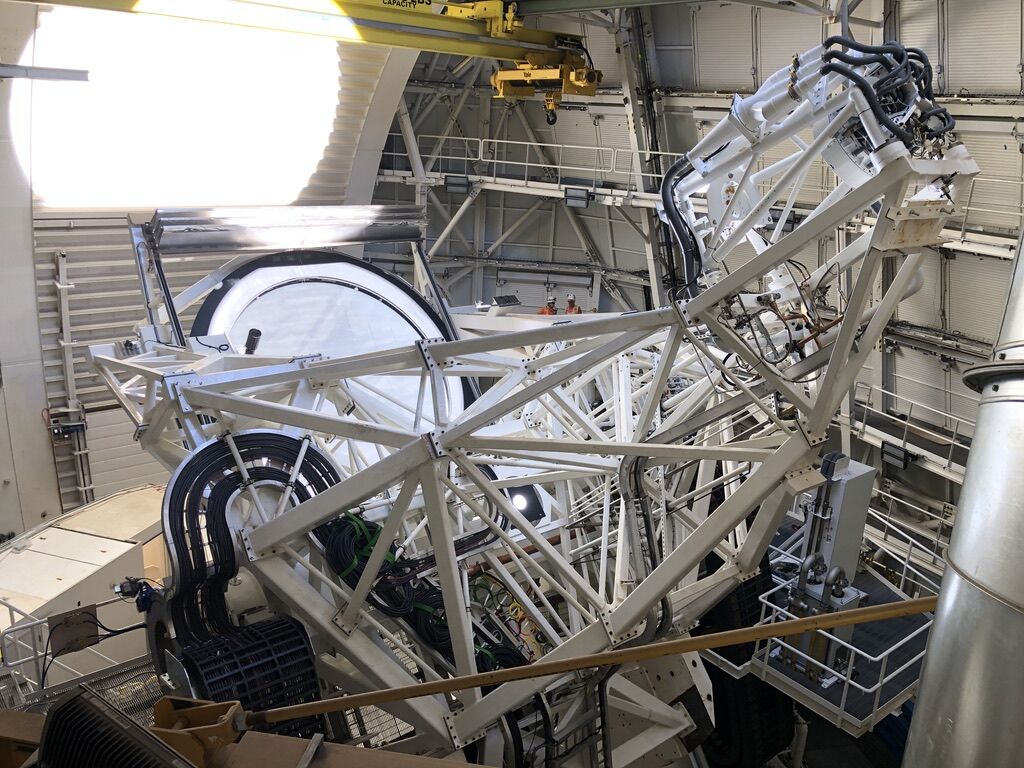NSO: Inouye Telescope project passes final construction review

The National Science Foundation’s Inouye Solar Telescope lets sunlight in through its aperture. Credit: NSF/NSO/AURA
By Dr. Thomas Rimmele, Associate Director National Solar Observatory
National Science Foundation (NSF) recently convened an external review panel for the Final Construction Review (FCR) of the Daniel K. Inouye Solar Telescope Project. The FCR extended over a period of four days and included a mix of presentations by project personnel, written question & answer (Q&A) assignments, and general discussion sessions. Due to COVID restrictions, the review was held remotely, however, a follow up site visit by the panel is still planned for later this year as conditions allow.
The panel was charged by the NSF to examine project management and performance; cultural and environmental compliance; safety and security; and final project acceptance. The panel found that “the responses to all key questions raised by the charge to the panel were positive and that the conclusion is that the project will be able to resolve any outstanding conditions and requirements by the close of the construction project.”
The panel examined whether the scientific requirements defined for the project were met by the Inouye facility and to what extent operational readiness was achieved. The panel found “the acceptance and modification control processes to be sound.” The panel also pointed out “the exemplary performance of the project in the areas of safety and cultural and environmental compliance” and concluded that “the project will be able to deliver a fully functional observatory and complete the required documentation for closeout of the project in the first half of CY2022.”
The panel issued recommendations for the remainder of the construction, which the project is in the process of implementing. The panel concluded its review with the following statement:
“Despite these numerous challenges and obstacles, this Project is nearing completion of an observatory that will be by design, and our expectation, the most powerful tool yet built to study a singular stellar object: our own sun. The Project has developed, in addition to an extremely worthwhile facility, methods and means of project management and construction that can and should be a hallmark for future federally funded projects, especially for the National Science Foundation. These hallmarks include cultural and environmental compliance, safety standards and practices, project documentation, and risk management and retirement; to name the highlights.”
In the coming months, the project will complete the acceptance and science verification of the remaining two instruments, namely, the partner instruments Cryo-NISRP and DL-NIRSP developed by the University of Hawaii. The Inouye Solar Telescope is then expected to transition into its Operations Commissioning Phase (OCP) during which the first community-proposed science observations will be conducted. The OCP will begin around November 15, with formal and financial close-out of the project expected to conclude in early 2022.
